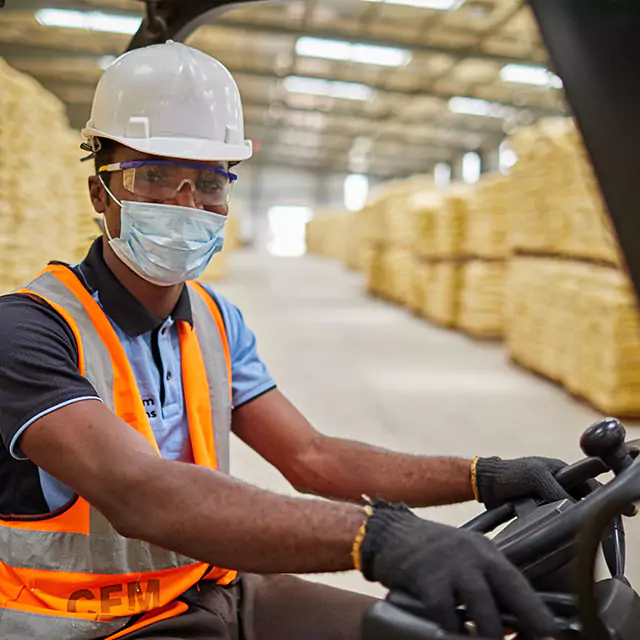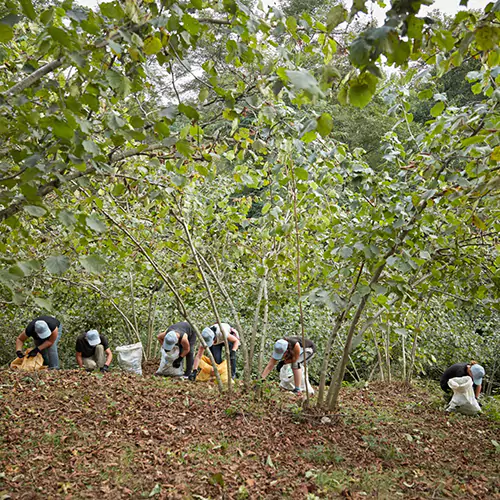Safe and decent work - related to UN Sustainable Development Goal 8 - can be measured in many ways. From the number of child labor cases identified and remediated on farms, to the number of employees involved in hazardous work in processing facilities.
While we comply with all relevant laws and international agreements in our own operations, tackling labor issues isn’t easy. Many of our supply chains are in rural areas in emerging markets and may involve intermediaries and other third parties, which adds layers of complexity.
Our initiatives Include:
Training on safe working practices and information on labor rights
Promotion of formalized labor contracts
Rollout of the Olam Supplier Code
Child labor monitoring and remediation
Grievance communications mechanism
Compliance and reporting on our health, safety, and working conditions as stated in the Fair Employment Policy
Here’s a glimpse of other sector initiatives and partners we work with to promote safe and decent work:
Goals and Progress
We report on the goals and targets in the Human and Social Capital sections of our 2020 Annual Report. Updates include:
Progress towards our Fair Employment policy targets
Progress towards our ‘An Even Safer Olam’ campaign targets
How we are tackling child labor
Monitoring through AtSource+
All suppliers with products enrolled on AtSource must adhere to the principles of good health, safety and working conditions, as outlined in the Supplier Code. AtSource+ also allows customers to track a number of important metrics across their supply chains including:
Number of farmers in a farmer group trained on good labor and health and safety practices
- Number of farmers covered by an active and effective Child Labor Monitoring and Remediation System including:
- The number of children identified in child labor through inspections and the number of child labor cases remediated
- Percentage of ofi employees trained on labor rights and practices
- Number of ofi employees occupying a position with hazard or at risk. For example, handling chemicals or operating machinery
Tackling the root causes of child labor
How childcare makes all the difference during the coffee harvest
AtSource+ metrics to track progress:
- Farmers in a farmer group trained on good labor practices
Child labor in coffee-producing countries is often the result of school holidays coinciding with the harvest season. Both parents need to be on the farm to pick coffee. So, in the absence of any other form of day care, it’s common and culturally acceptable for children to accompany their parents.
ofi is helping to tackle child labor in a number of ways, starting by training farmers in good labor practices. Working with farmer communities across the Santa Rosa, Huehuetenango and El Progresso regions in Guatemala, ofi has also built eight kindergartens. These provide classes, care facilities and two full meals a day for 160 children at the peak of the harvest, when schools are on vacation. There are plans for a further 26 kindergartens by 2025.
AtSource+ is helping to measure the impact of this program on child labor. Not only does it report on the number of farmers in a farmer group trained in good labor practices, it also tracks the number of children identified in child labor. Over time, it will show how incidences of child labor have reduced since the introduction of the kindergarten program.
Achieving 100% child labor monitoring in our managed cocoa programs
We’ve continued to roll out our Child Labor Monitoring and Remediation Systems (CLMRS), designed in collaboration with the Fair Labor Organisation (FLA). The FLA is conducting risk assessments in all our cocoa sourcing countries and providing recommendations for developing a comprehensive CLMRS program in each.
With training and the help of a smartphone, community leads or field officers collect detailed social data on communities and individual farming households, identifying children at risk and tailoring interventions based on the issues identified. The app has now been rolled out in all nine of our cocoa sourcing countries, covering a total of 183,000 farmer households.
Read ofi news
Child labour in cocoa producing countries often stems from some really complex societal and economic challenges.
Child labour monitoring and remediation is set to be rolled out across Cameroon in the first programme of its kind by a cocoa company. The move forms part of Olam Cocoa’s global commitment to put children first by tackling child labour and helping more children attend school across its entire direct supply chain.
Going to school during the summer holidays wouldn’t be most children’s idea of fun, but for 13 year-old Nurcan Sekiz, it means a safe space to play and not work.
- Transparency in Coverage
- Modern Slavery Statement
- CA Supply Chain Transparency Act
- Transparency in Coverage
- Modern Slavery Statement
- CA Supply Chain Transparency Act
Copyright © 2024
Olam International Limited. All Rights Reserved. Co Reg No: 199504676H





